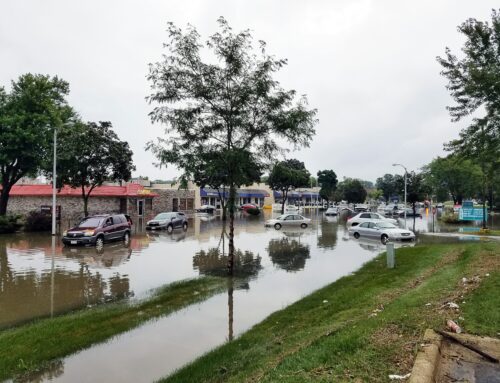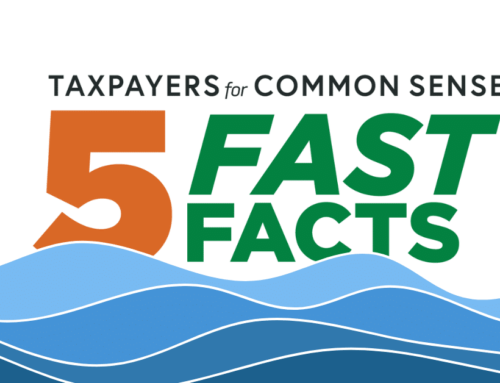The Senate’s failure this week to move forward on debating a bipartisan infrastructure package is the latest bump in the road for efforts to deliver on a topic popular with the public and policymakers. But not starting the debate was not as consequential as you might think. Lawmakers on both sides of the aisle are continuing to work as we write. So as Washington contemplates the right path forward, we think it’s important they figure out exactly where they’re trying to go. If taxpayers are to get the investments they need, we need everyone to follow the same map.
Safe, efficient, 21st-century appropriate infrastructure is necessary for a well-functioning society and economy. At Taxpayers for Common Sense, we have long supported federal investments in infrastructure. But with great investments, comes great responsibility. When it comes to making investments in our nation’s roads, bridges, and other vital infrastructure, a number of principles apply. In fact, we wrote a report on this called Smart Strategies for Infrastructure: Getting it Right for Taxpayers.
Those principles still apply, though they might be putting the cart before the horse. First, policymakers need to agree on what is “infrastructure.”
Infrastructure investment is widely popular with the public. Poll-conscious politicians have routinely turned to infrastructure when looking for a vehicle to put some wind in their sails. That’s one of the main reasons the Trump Administration declared “infrastructure week” seemingly every other month. Now infrastructure is a buzz word that politicians apply to nearly any policy. Get your favored policy labeled as “infrastructure,” and it’s relatively smoother sailing.
That’s not how this should work.
In contemplating a path forward, Congress needs to get back to the basics. That’s why we spearheaded a letter to Congress, with more than 20 fiscally conservative groups, to request that common sense standards steer development of any infrastructure package including:
- A defensible definition of infrastructure,
- No Pentagon spending, and that
- Spending must align with revenue
What types of infrastructure are important enough to garner federal investments has always been the subject of debate. Dredge up past legislative fights about “Post Roads” in the late 18th and early 19th century if you doubt us. But despite regional and political differences, the majority view has been that roads, runways, bridges, tunnels, dams, railroad tracks, and federal buildings certainly qualify. Safe delivery of drinking water, access to broadband, and responsible investments in the electric grid usually make the cut.
Now the disruption brought by the pandemic and threats caused by climate change are leading many to broaden the definition to new areas. Child care, elder care, soil, semiconductors, the national forest system. You name it and someone in Washington has probably touted it as a vital piece of physical/human/economic “infrastructure” that keeps our nation’s economy humming. This definitional debate about what constitutes infrastructure and thus what should be in an infrastructure package is exactly what Congress should tackle. This is not to say these are not important or critical issues or even federal issues, but are they infrastructure.
Because clearly some programs have no place in an infrastructure package no matter how broadly it is defined. Take for example the Pentagon. It’s true the military constructs roads, bridges, schools, water systems and other types of infrastructure. It also receives $10-$11 billion in a military construction budget annually. If there is some pressing need not covered by that generous budget, then a reprogramming of some portion of its $700+ billion annual non-construction budget could plug the gap. Taxpayers – not users – cover ninety percent of the cost for building and maintaining the locks, dams, and channels used by commercial barge operators on our nation’s inland waterways. Adding billions of dollars, especially for construction on money-losing waterways, would be fiscally reckless. The same goes for additional agriculture conservation spending without first having a discussion about how to improve the cost-effectiveness, accountability, and responsiveness of current farm safety net programs – many in dire need of reform. Similarly, while oil and gas wells are a part of “energy infrastructure,” the tens of thousands of wells companies have abandoned are not. The companies, not taxpayers, should be bearing the cost of cleaning up these orphaned and abandoned wells.
Finally, branding something “infrastructure” in no way eliminates its cost. Absolutely certain projects and federal policies can facilitate economic development and even pay for themselves. But whether these are in an infrastructure bill, reconciliation package, or other legislative vehicle, the numbers need to be grounded in reality. Instead of budgetary gimmicks and creative accounting, Congress must align infrastructure investments with credible, conservative estimates of revenue or other offsets.
That’s because after the BIF (Bipartisan Infrastructure Framework) comes the “boom” of a budget reconciliation package that will only take a bare majority to pass the Senate and will carry trillions more dollars in infrastructure investment.
So we’ll say it again: our common sense principles must be the building blocks of any package.











Get Social